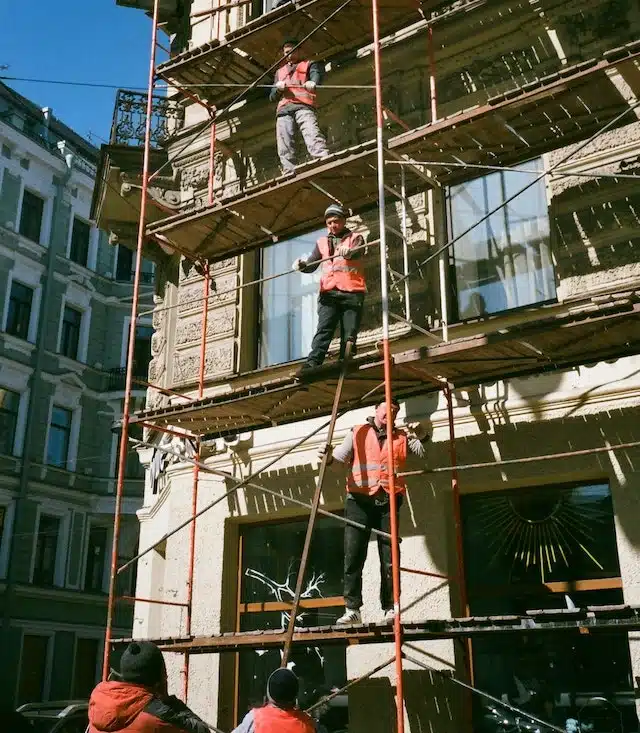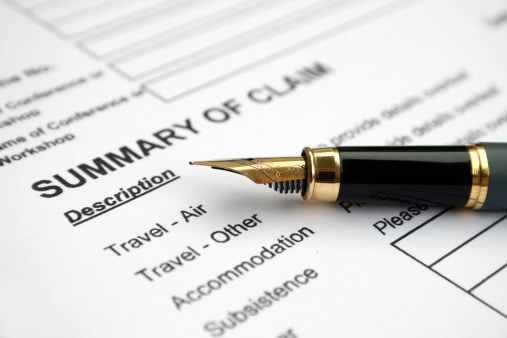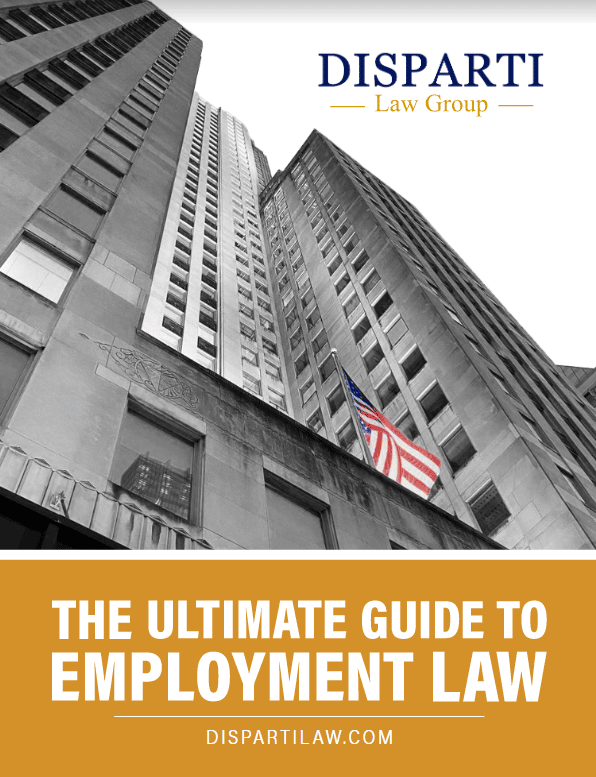 Scaffolding hazards are one of the greatest threats to worker safety on construction sites. According to the Occupational Safety and Health Administration, 2.3 million construction workers often work on scaffolds.
Scaffolding hazards are one of the greatest threats to worker safety on construction sites. According to the Occupational Safety and Health Administration, 2.3 million construction workers often work on scaffolds.
Preventing accidents and injuries should be a priority for employers and companies using scaffolding to complete their projects. There are several safety measures an employer can take to prevent scaffolding accidents on construction sites.
In This Article
- Scaffolding Must Be Properly Assembled
- Proper Scaffolding Equipment Must Be Used
- Under Supervision
- Protection From Other Nearby Hazards
- Employee Training
- What to Do When Scaffolding Accidents Happen
Scaffolding Must Be Properly Assembled
The most obvious way to prevent scaffolding accidents is to ensure that the scaffolding was properly assembled. For example, the scaffold must meet specific structural criteria to guarantee its stability. It should be constructed to be sound, rigid, and capable of bearing not only its own weight but also four times the maximum intended load, all without any settling or displacement. This requires using high-quality materials and precise engineering during assembly.
Additionally, the scaffold must be erected on solid footing to provide a stable base, reducing the risk of tilting or collapse during use. This means that makeshift supports such as barrels, boxes, loose bricks, or concrete blocks should never be used to prop up the scaffolding. These items lack the necessary stability and load-bearing capacity. Such makeshift solutions can lead to disastrous consequences, jeopardizing the safety of workers and bystanders alike. Only approved and appropriate components should be used for scaffold support to prevent scaffolding accidents.
Proper Scaffolding Equipment Must Be Used
Even if the scaffolding is correctly assembled, it will be of no use if there is faulty or missing equipment. For example, scaffolding slips and falls are more likely to happen if necessary safety equipment such as guard rails mid-rails, or toeboards are missing. These components act as protective barriers, reducing the risk of workers slipping or losing their balance while working on the scaffold.
Additionally, braces, brackets, trusses, screw legs, and ladders play integral roles in stabilizing the scaffold structure. Any signs of damage or weakening in these components must be promptly addressed. Damaged or weakened parts can compromise the scaffold’s stability, leading to hazardous situations. Immediate repairs or replacements are necessary to ensure the scaffold remains structurally sound and safe for use to prevent scaffolding accidents.
Finally, scaffold platforms should be constructed with tightly planked scaffold-grade material or its equivalent. This ensures the platform’s strength and integrity, minimizing the risk of sagging or collapsing under the weight of workers or materials. Regular checks and adherence to quality standards for scaffold planks are vital to maintaining a safe and dependable working platform.
Under Supervision
Before scaffolds are used by construction workers they should be checked for quality. Scaffolds should never be erected, moved, dismantled, or altered without the direct oversight of a competent person. This individual must possess the necessary expertise and knowledge of scaffolding safety regulations and procedures to ensure that each step is carried out correctly and securely. Their supervision guarantees that the scaffold is constructed in compliance with safety standards to prevent scaffolding accidents and keep workers safe.
A competent person should complete these inspections regularly to ensure the scaffolding’s ongoing safety and stability. These inspections should occur at designated intervals, and the competent person should reinspect the scaffold after any significant occurrences or changes that could potentially impact its structural integrity. This thorough inspection process ensures that any issues or damages are promptly identified and addressed.
It’s also vital that, when using suspension scaffolds, the rigging is inspected by a competent person before the start of each work shift and after any event that could affect its structural soundness. This rigorous inspection regimen ensures that any rigging damage or deterioration since its last use is promptly detected and remedied, providing an extra layer of safety for workers.
Protection From Other Nearby Hazards
Ensuring protection from other nearby hazards is crucial when working on scaffolding. One essential aspect is safeguarding synthetic and natural rope used in suspension scaffolding from heat-producing sources. Heat can weaken ropes over time, compromising their strength and potentially leading to catastrophic failures. To prevent scaffolding accidents, workers must be diligent in keeping heat sources (i.e. welding equipment or other open flames) at a safe distance from the ropes. Adequate shielding or insulation may also be required to protect the ropes from radiant heat, ensuring their longevity and reliability during scaffold operations.
Another vital safety measure is maintaining a safe distance between scaffolds and electric power lines. Scaffolds must be positioned at least 10 feet away from electric power lines at all times to prevent the risk of electrical hazards. Accidental contact between scaffolding components and live power lines can result in severe injuries or fatalities due to electric shock. By adhering to the 10-foot clearance rule, workers reduce the likelihood of scaffolding becoming energized or creating an electrical pathway, providing a significant layer of protection against electrocution and electrical accidents.
Employee Training
Employee training plays a crucial role in preventing scaffolding accidents and ensuring the safety of workers. For example, employees should be trained on how to properly set up fall protection on the scaffolding. While one may believe that diagonal braces as fall protection are sturdy enough, they are not designed to function as fall protection devices.
Employee training must also cover the safe methods of accessing scaffolding. Scaffolds are often elevated structures, and accessing them through improper means, such as using makeshift or unstable ladders, can significantly increase the likelihood of falls and injuries. Workers need to be trained on using designated ladders and stairwells that are specifically designed and approved for scaffold access. This training ensures that employees are aware of the proper procedures for ascending and descending scaffolds safely, reducing the chances of slips, trips, and falls during entry and exit.
What To Do When Scaffolding Accidents Happen
Scaffolding accidents can cause significant injuries to those involved which is why it is so important to prevent these types of construction site accidents. If a scaffolding accident happens, the first thing to do is to prioritize the safety of all individuals in the vicinity. Here are a few important steps to take if you’re ever involved in a scaffolding accident.
1) Call for emergency medical assistance immediately
Do not attempt to move seriously injured individuals unless they are in immediate danger and require relocation for safety reasons. While waiting for medical help to arrive, provide first aid to the best of your ability and comfort and reassure the injured workers to keep them calm and stable.
2) Secure the accident scene and prevent additional accidents or injuries
Clear the area of any hazards that may have contributed to the accident, such as debris or loose materials. If the scaffold is compromised or unstable, evacuate all workers from the area to prevent further collapses. Take necessary precautions to protect others nearby by cordoning off the accident site and warning them of the potential dangers.
3) Notify the appropriate authorities and supervisors about the incident
It’s important to ensure that a thorough investigation is conducted to determine the cause of the accident and implement preventive measures to avoid similar incidents in the future. Learning from the accident can help in enhancing safety protocols and training for scaffold use and maintenance.
4) Contact an attorney.
If you are a construction worker who has been involved in a scaffolding accident, you are likely eligible to file a workers’ compensation claim to cover expenses for your scaffolding injuries. However, these claims can be challenging to complete. To maximize the compensation for your injuries, consider contacting a workers’ compensation attorney who can walk you through the process and ensure you receive what you deserve.
Generally, employees cannot sue their employer, especially once they have filed their workers’ compensation claim. However, if you believe that your accident was caused by the gross negligence of your employer, you should speak to an attorney who can advise you on if it is possible to file a lawsuit against them. If you believe the negligence of another party that is not your employer caused your accident, you may have a case against them and an experienced construction site lawyer can help you seek justice.
While construction workers are most at risk for scaffolding accidents, they may not be the only victims of these accidents. Passersby, especially in busier cities like Chicago, frequently pass by scaffoldings. It is the employer’s job to prevent scaffolding accidents to protect anyone who comes near the construction site. If you were injured while passing by a scaffolding, you may be able to file a lawsuit against that company to help cover the expenses associated with your injuries including hospital bills, lost wages, and pain and suffering.
At Disparti Law Group Accident & Injury Lawyers, we want to help victims seek justice for what they have been put through due to another party’s negligence. No one should carry the heavy financial burden associated with these types of accidents when several precautions should be taken to prevent scaffolding accidents.
To discuss your case with a legal expert, call us at (312) 600-6000 for a FREE case review today. Find out why so many say… Larry wins!









